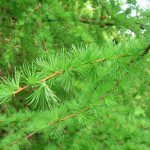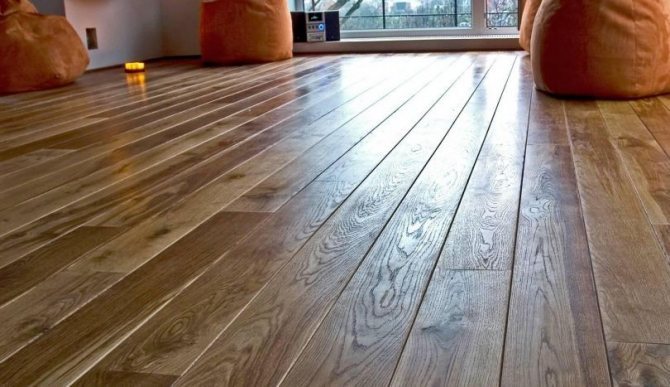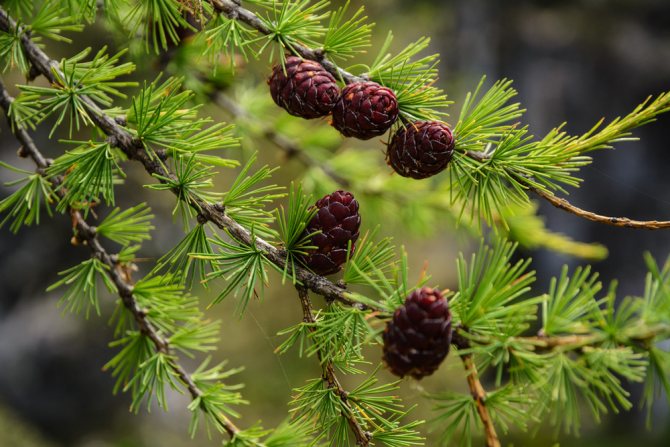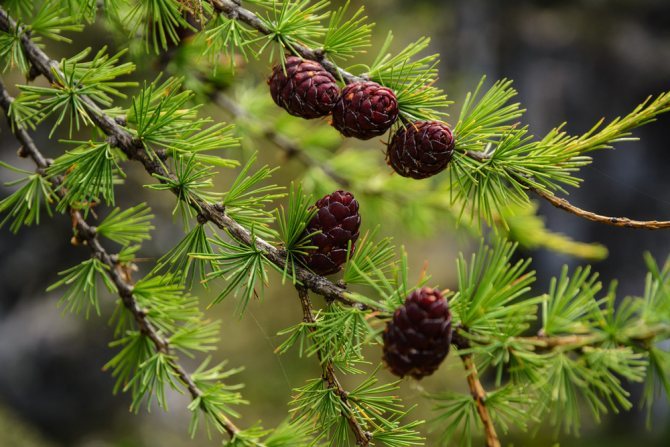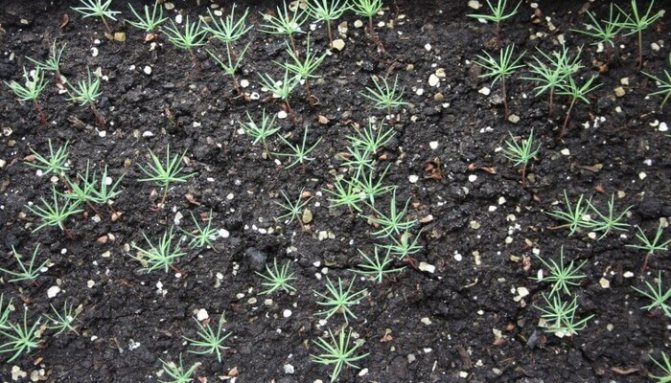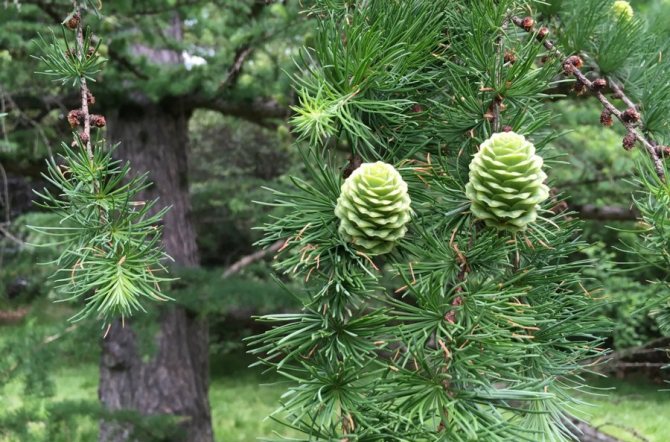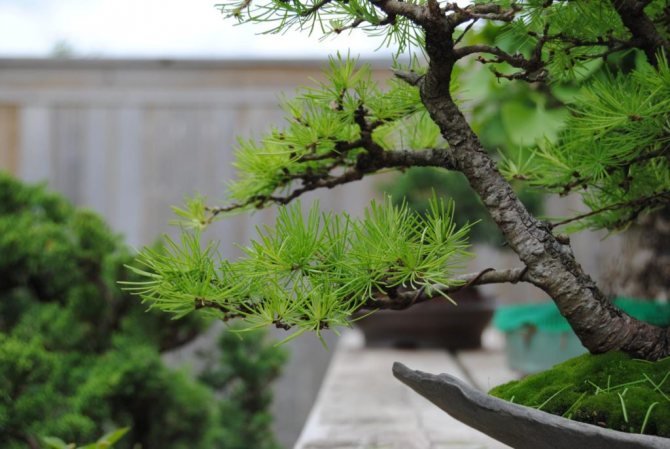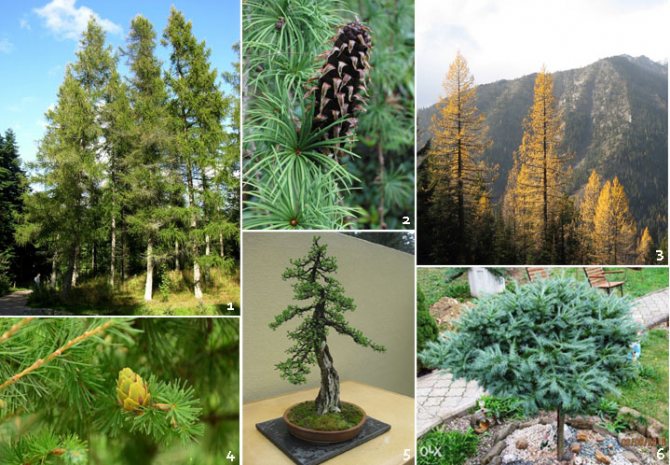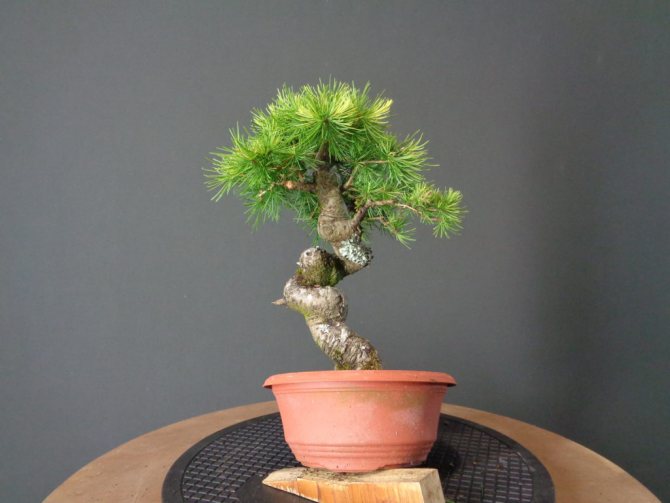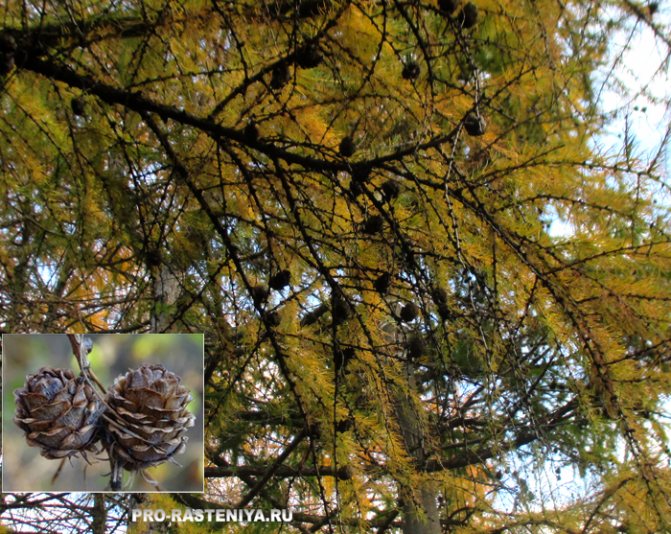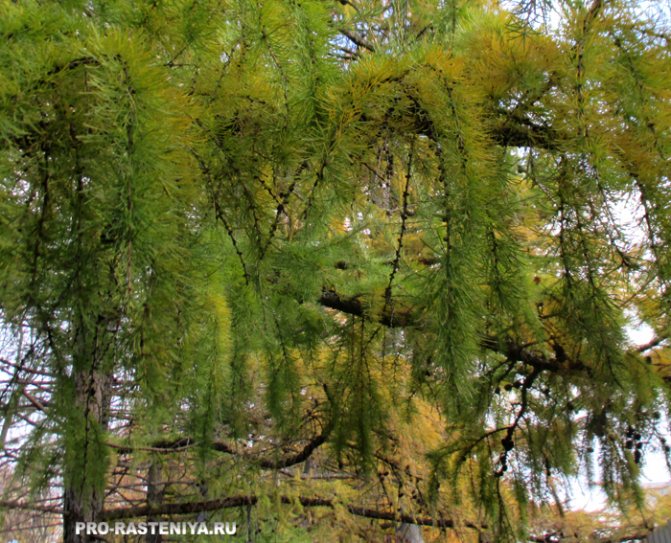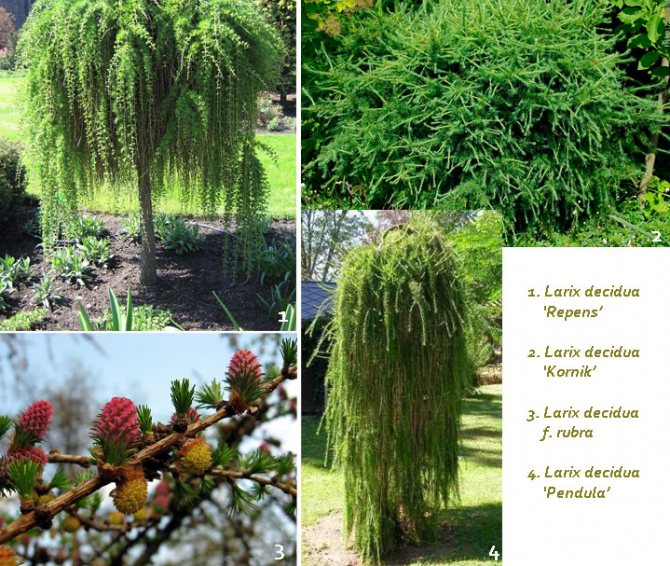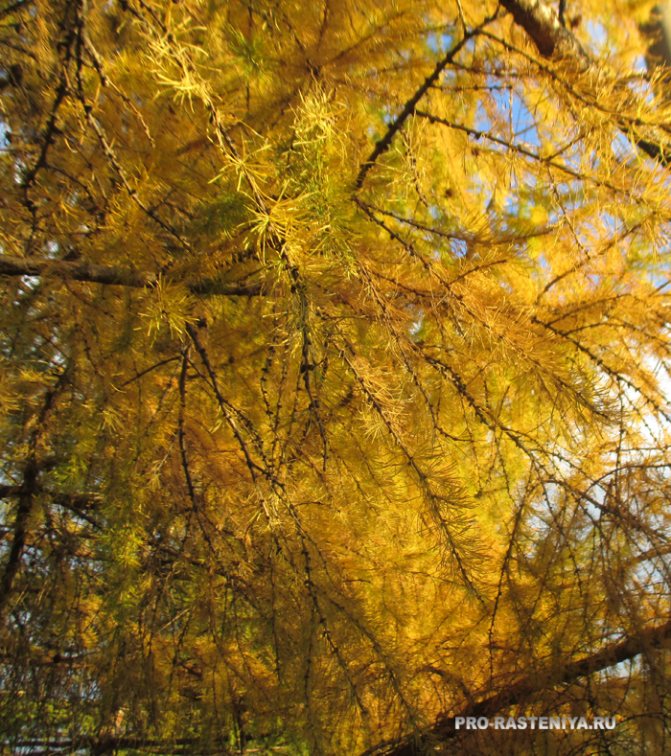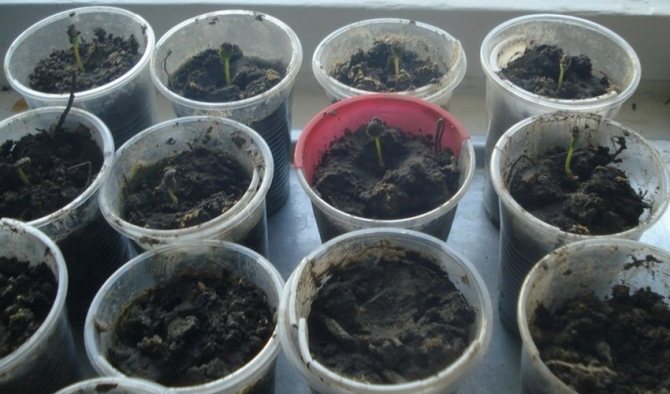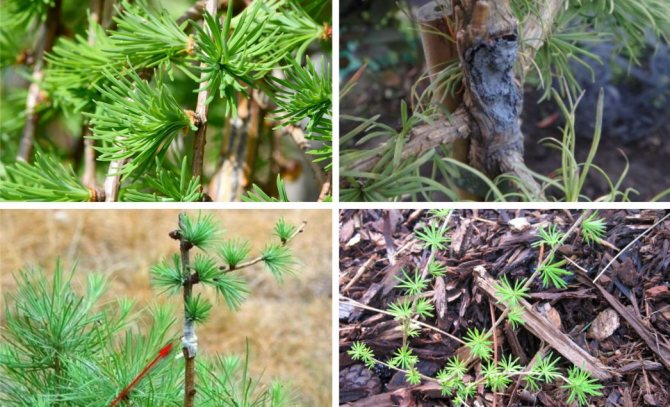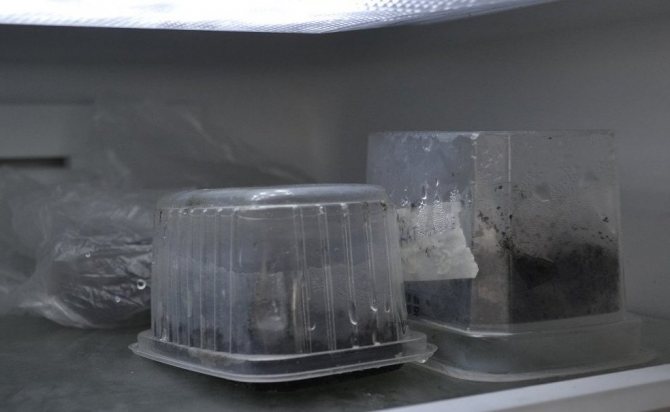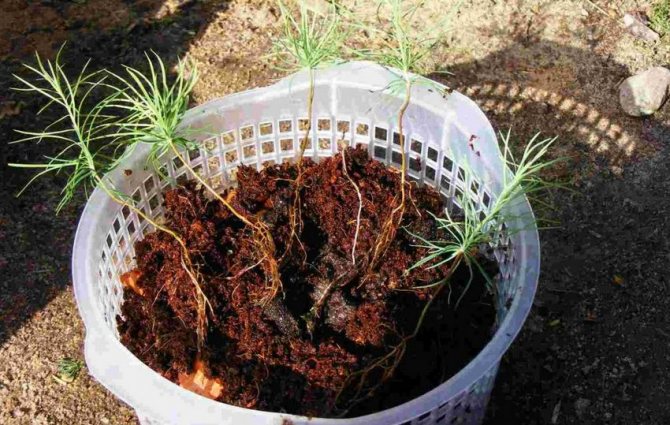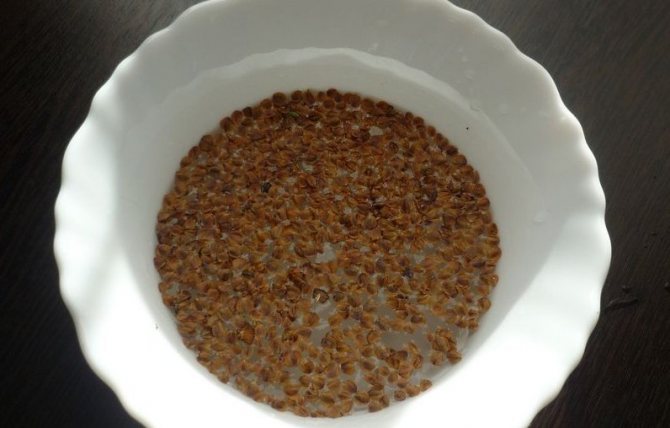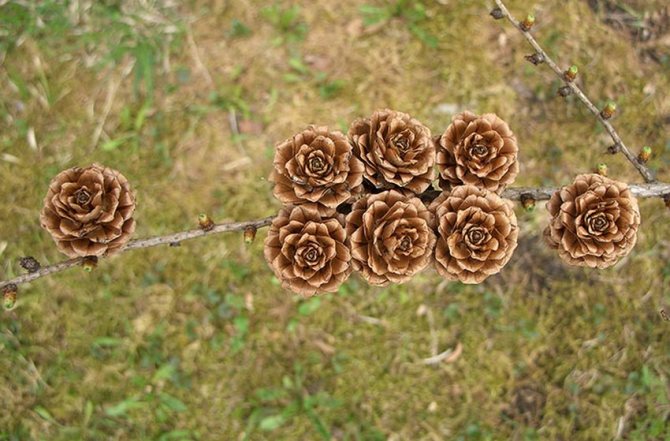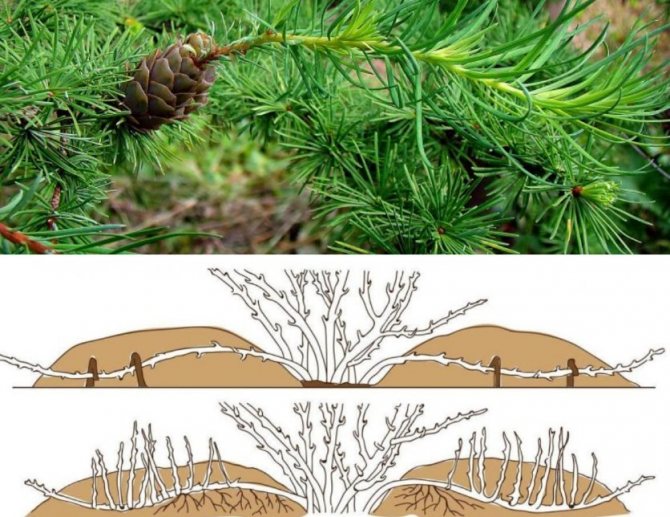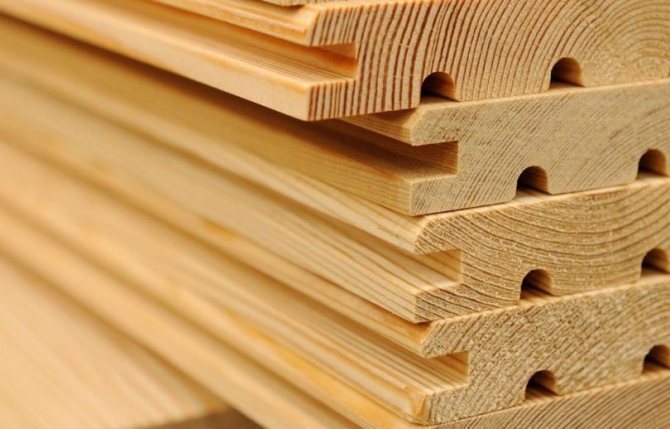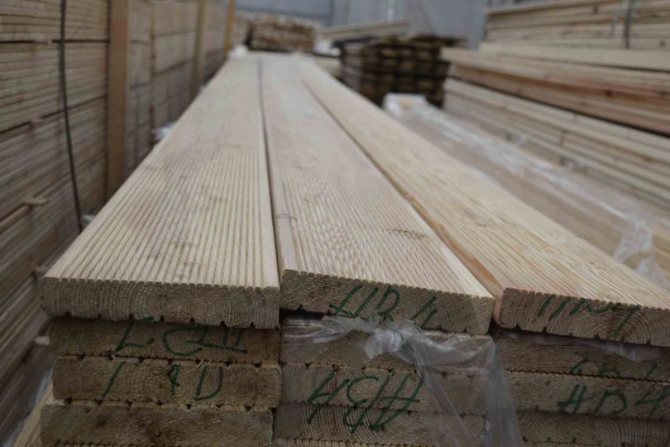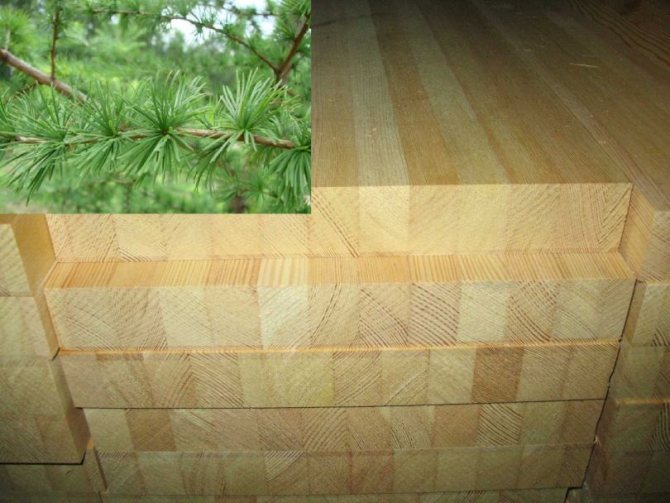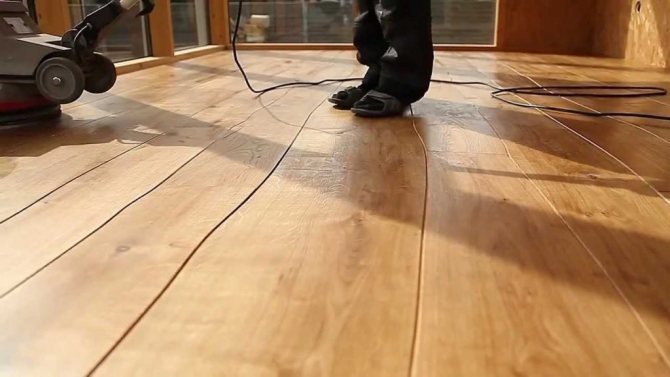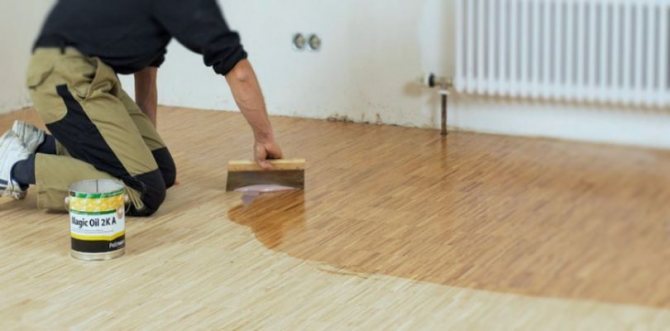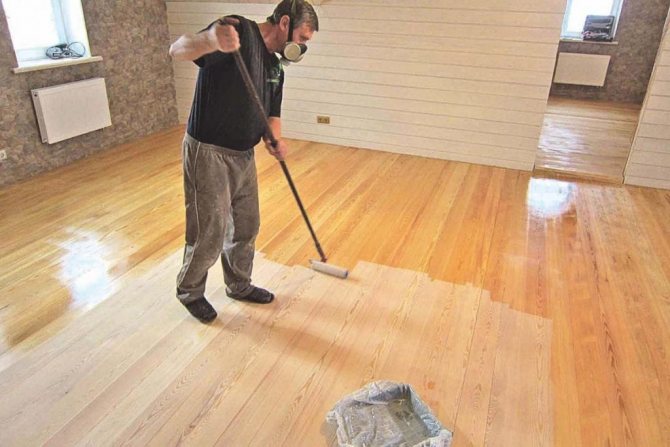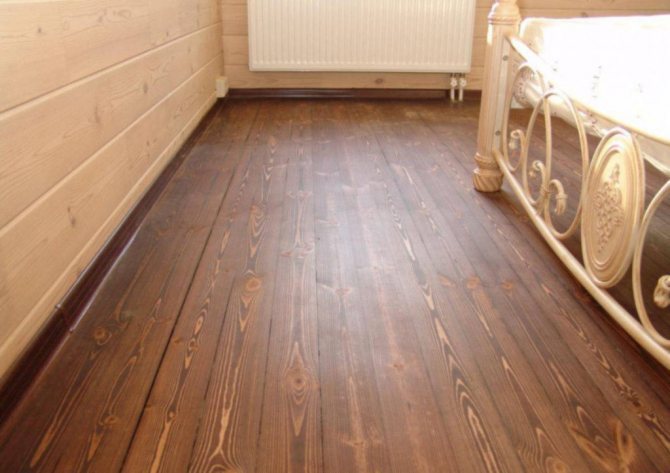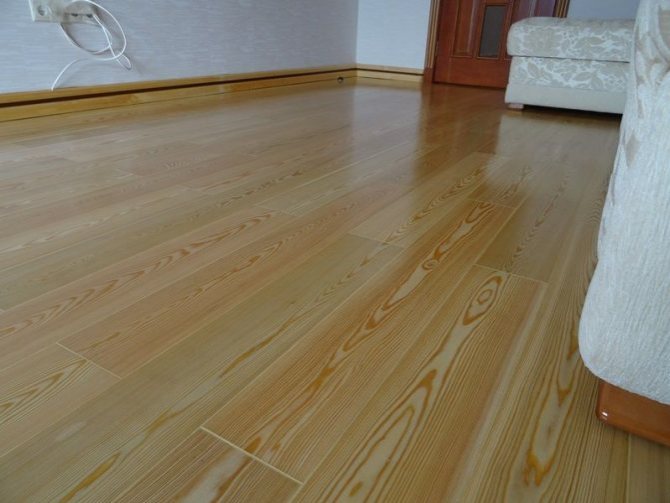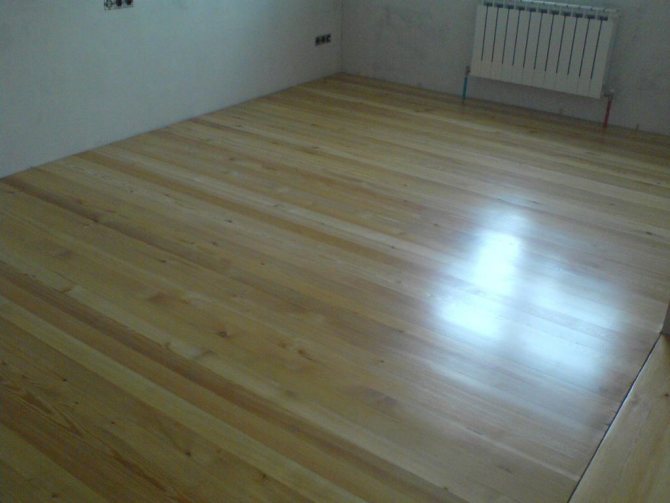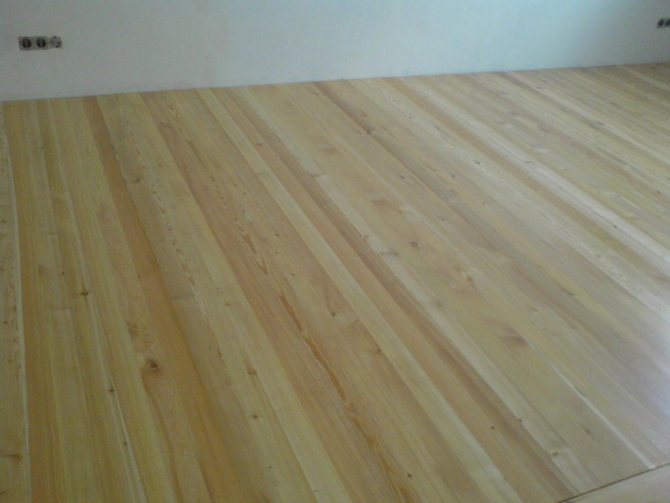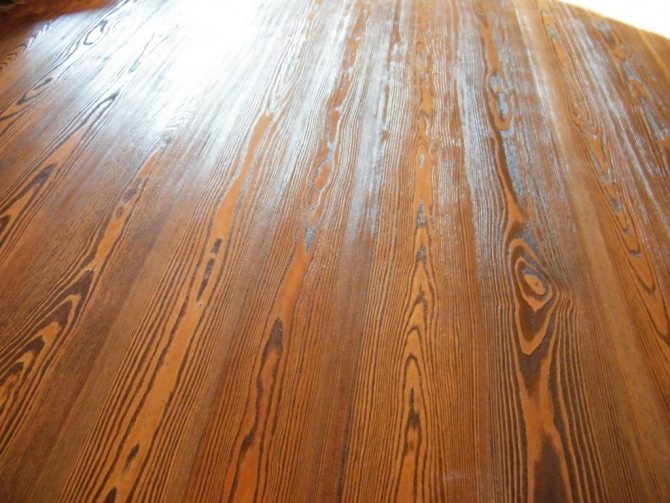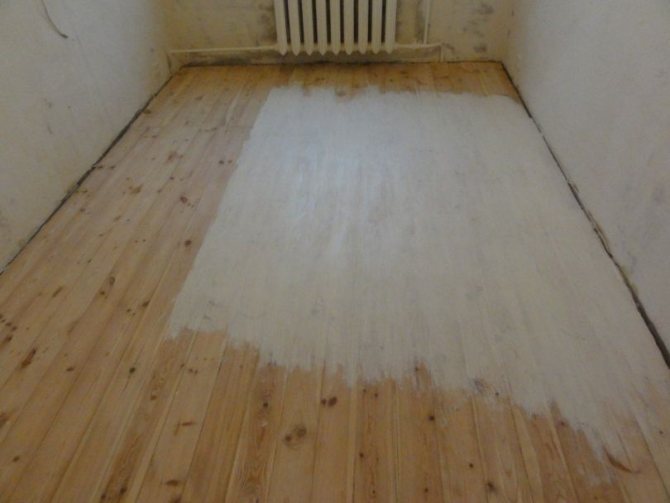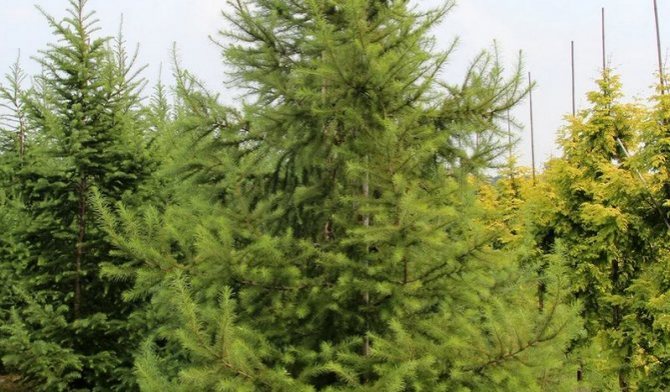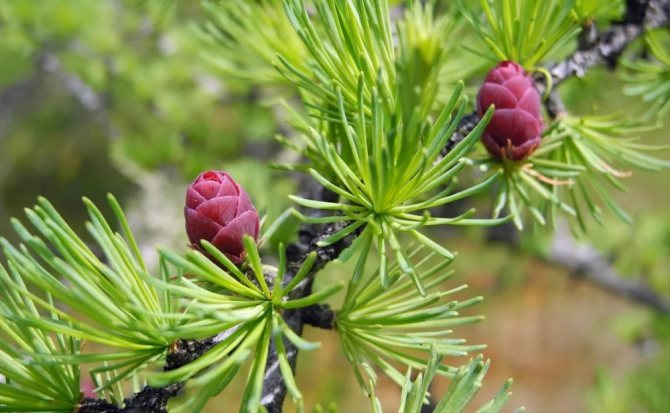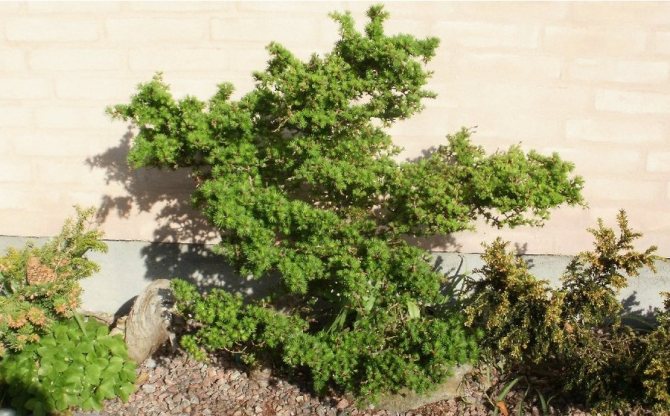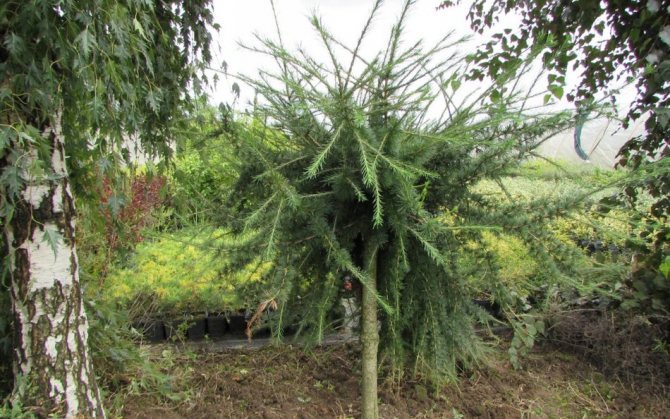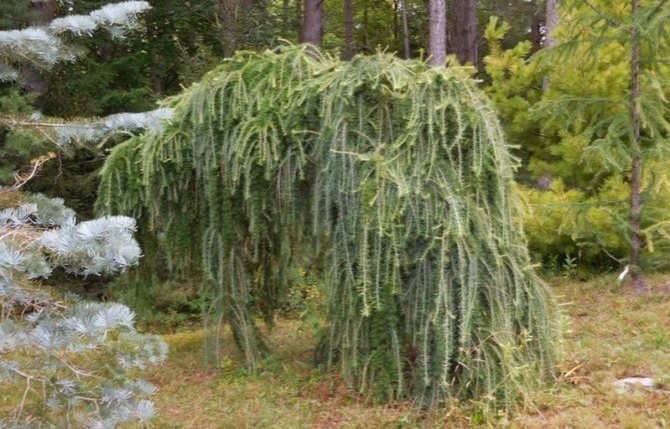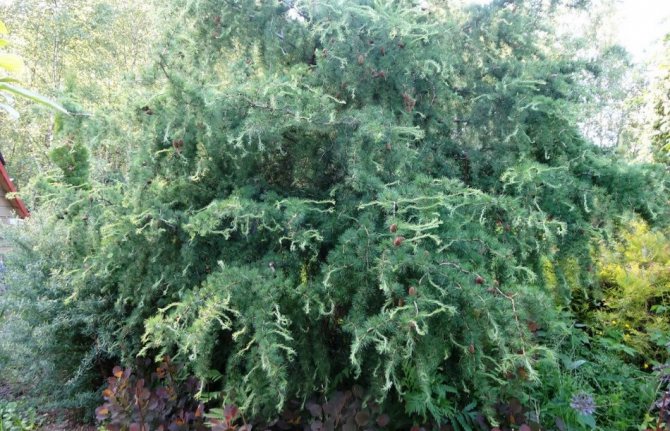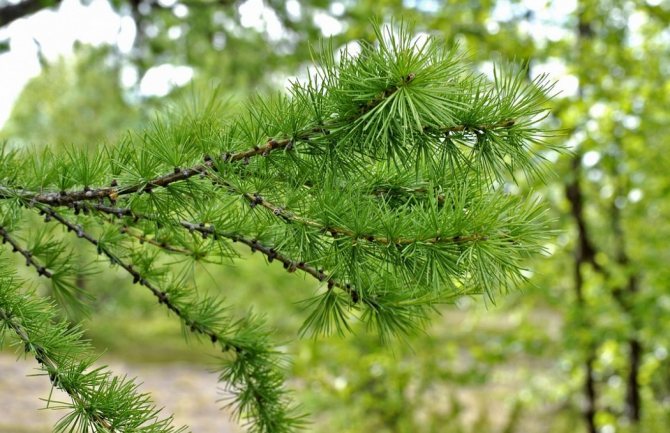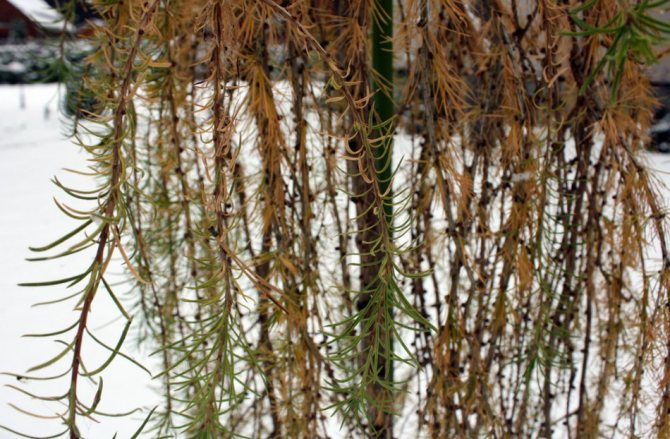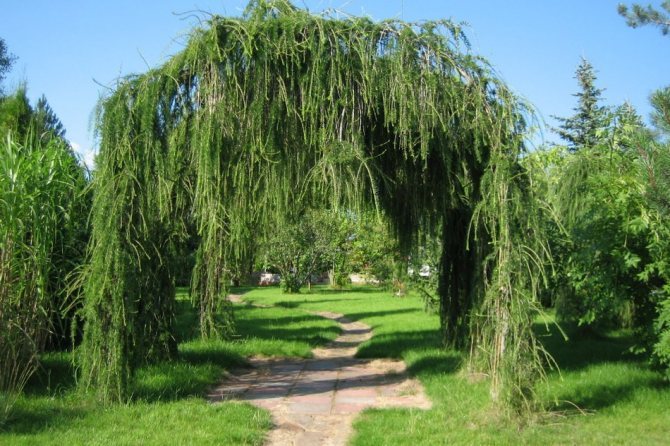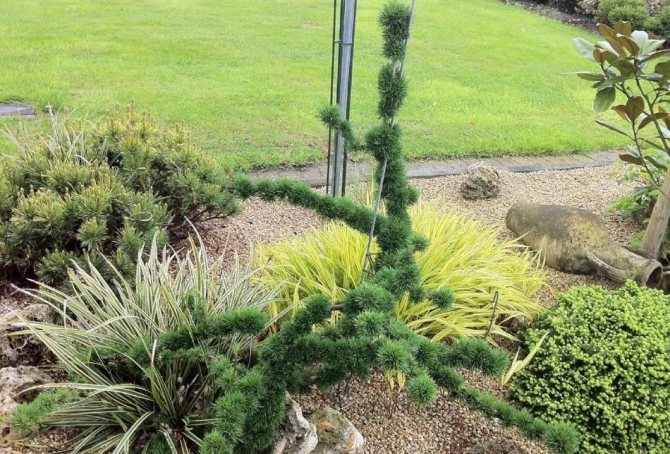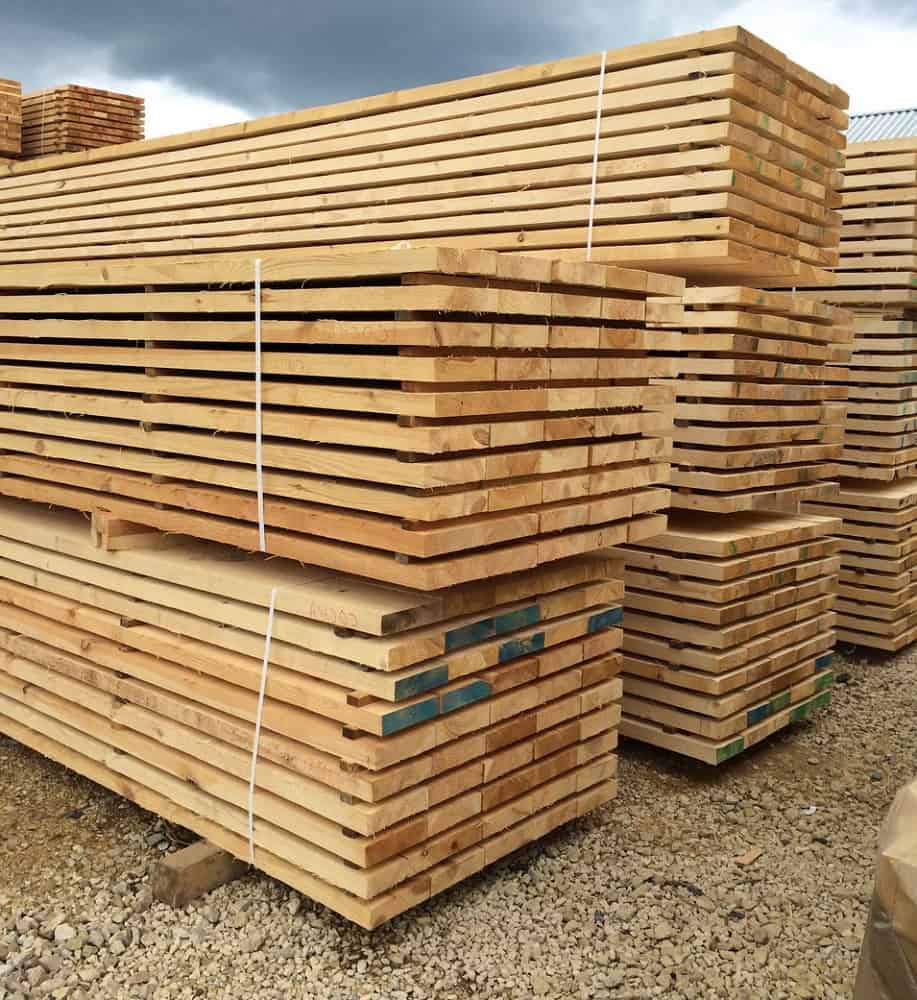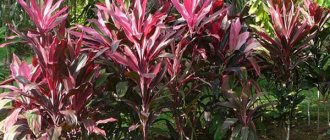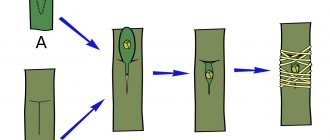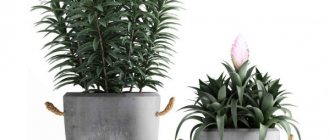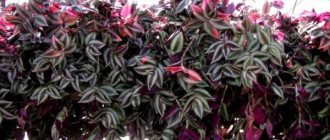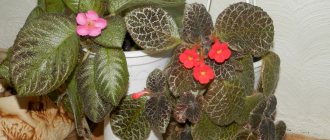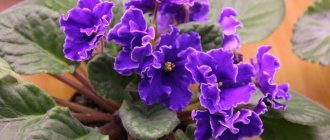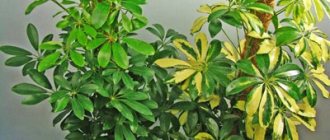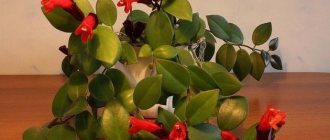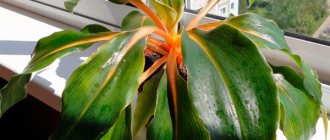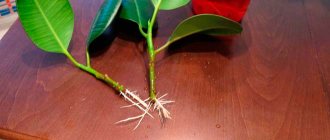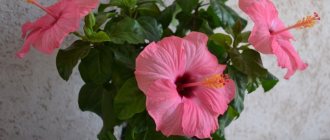Larch is a type of coniferous wood. It combines the perfection of useful qualities and longevity. This tree has a wide range of uses, but it has especially proven itself in construction. The valuable properties of this tree are not comparable to any other wood species, which is why the cost of larch is slightly higher than that of pine, but significantly lower than that of many other types of wood. The world of the Forest is truly amazing, and larch takes the main place in it.
- Reproduction
- Varieties
- Larch pests
- Differences between larch and pine
- Advantages over other breeds
- Export of the staircase
- Use in construction
- Where to buy larch in Moscow and the Moscow region
- Photos larch tree
Description of the breed. Larch is a coniferous tree.
Larch - coniferous tree
Many people are wondering whether larch is a coniferous or deciduous tree. Also, some believe that larch is a deciduous tree. Larch is a coniferous tree species. Under favorable conditions, an adult tree can reach a height of 50 m in height and a trunk diameter of up to 1 m. The average lifespan of the breed is from 300 to 500 years. Cases of plant life reaching 800 years have been recorded. The tree has a loose conical or ovoid crown. It is well translucent by the sun. The needles have a bright green color and flattened shape. Its arrangement is single or spiral, and on short shoots it is bundle. The branches are arranged in a chaotic manner, without a pattern. If the area is windy, the needles can be located only on one side of the tree. It is worth noting that in the fall the tree sheds its "leaves" before the onset of spring. The plant tolerates winter quite easily, this is evidenced by the absence of frostbite, "frostbite" even at a temperature of -60 degrees. Therefore, this tree can be found in the harsh northern regions, farther than any other vegetation. In Russia, the plant occupies large areas of Siberia, the Far East and the south of Primorye. Outside our country, the larch breed is common in Northern and Western Europe. The soil on which the valuable tree grows does not have any special qualities. The tree grows on mossy Siberian bogs, as well as on mountain slopes. Of course, this location affects the growth and size of the brainchild. In favorable areas, the tree can coexist with such species as spruce, pine, birch. A strong root system does not have a pronounced trunk, has a branched shape and deep lateral roots. This position of the root system allows you to hold on tightly and withstand strong gusts of wind.
Types and varieties. Harvesting
The main difference between the varieties is not only in the size and shape of the buds. For example, the Gmelin larch sheds its needles at the end of October, while the American and Siberian needles end in November. Each species has dozens of varieties and subspecies, you can't list them all. The main ones are:
Falling or European. Prefers mountainous terrain, grows in many European countries. The most famous forms are Polish and Carpathian.
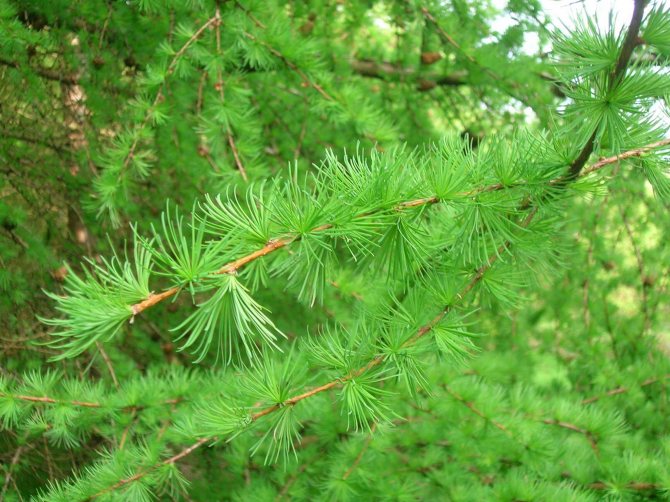
European Japanese larch or Kempfer larch is an endemic species that grows on the island of Honshu in Japan.The species was successfully adapted for cultivation in Europe and on Sakhalin Island. Popular varieties: Blue Dwarf and Wolterdingen.
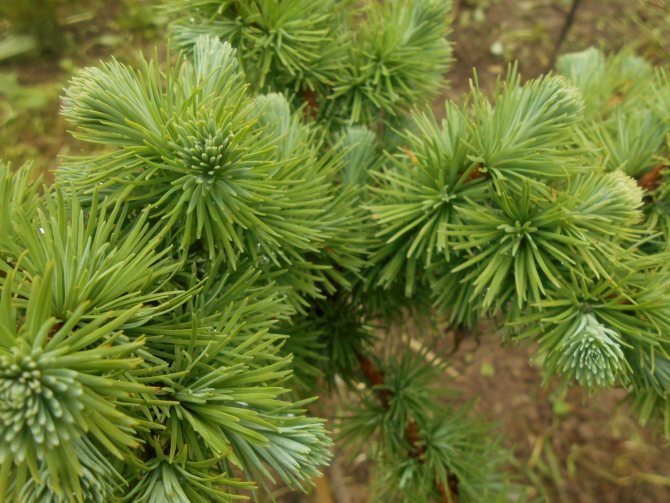

Kempfer Siberian larch. It grows in vast areas, including Altai, Siberia and part of China. Excellent frost tolerance, suitable for urban cultivation.
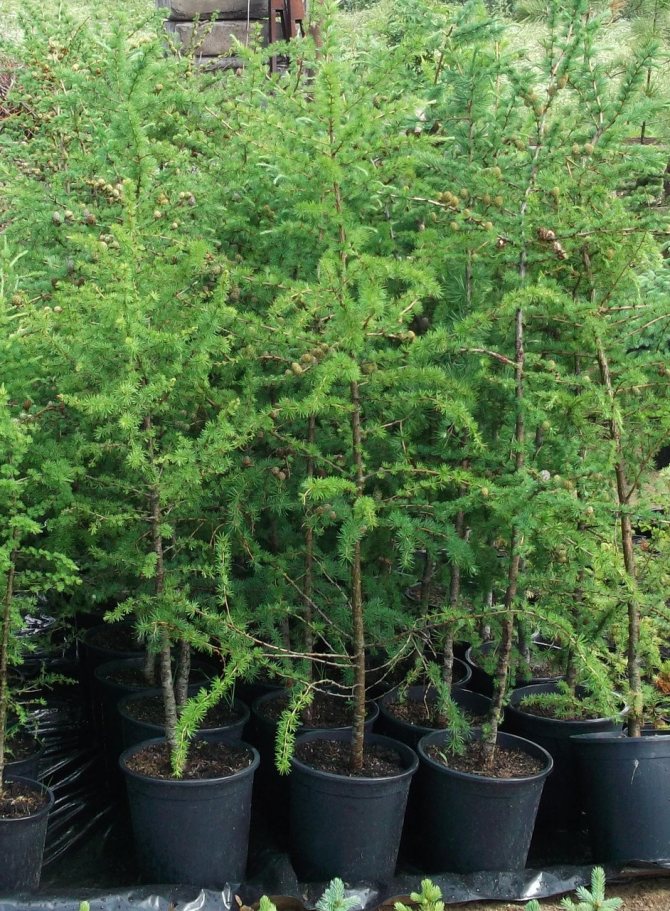

Siberian
Harvesting is a whole art. It is good that the cones hang low, sometimes it is possible to do without a stepladder. The collected fruits are placed in a linen bag next to the battery. Under the influence of high temperature, the scales will bend back and it will be possible to get the seeds. But the cones of European larch will have to be cut with pruning shears. The collected seeds are stored in paper bags.
Breed reproduction. Larch cone.
Larch cone
Plants begin to bear fruit when they are 10-15 years old. Good seed years are repeated at intervals of 5-6 years. Natural propagation of the tree takes place with the help of seeds. Male ears are small and yellow in color, while female ears are red, pink or green. Pollination occurs in spring or summer, depending on the region. So, in the southern part, pollination begins at the end of April, and in the northern part - in June. The ripening of the cones will take place in the fall, so they begin to open either immediately or after overwintering. The seeds of the tree are small, with tight-fitting wings. Despite the strength of the plant, the seeds have a low percentage of germination, due to the absence of flying bags in the pollen, so many seeds are "blank".
Artificial breeding of the breed has two options: • Seed. • Cherenkovy.
Growing larch from seeds is much easier than using cuttings. For this, ripe buds are collected and dried before they open. The seeds are removed, and one month before the upcoming planting, they are soaked in water for one day, mixed with moist coarse sand. The finished mixture is laid out in special wooden boxes and placed in a cool place or refrigerator. It is important to take into account some of the nuances here, firstly, the boxes must have holes for natural ventilation, and secondly, it is necessary to correctly calculate the settling time so that the landing in the ground occurs at the end of April - beginning of May. It is recommended to plant seeds no more than 1.5 cm in depth, and it is strictly forbidden to ram or sprinkle seedlings with heavy soil on purpose. To do this, you can use a sand-peat mixture that has sufficient porosity to provide good oxygen access. As insulation of seedlings, you can use a film that can be removed after the first shoots. The seedlings should be transplanted to a permanent place after they reach the age of two. Growing larch using cuttings is a laborious process and requires many conditions. This is explained by a small percentage of rooting cuttings. Good growth and development of seedlings is influenced by moisture, temperature, soil composition and light. To comply with all requirements, special nurseries are used, where experts will be able to provide them with the necessary temperature and humidity conditions and care. It is worth noting that this approach is also explained by the poor rooting of cuttings in the open field.
Care features
As you may have guessed, larch trees are not afraid of cold weather. In general, they are resistant to many of the vagaries of nature, including lingering precipitation, frost, and wind. But there is one factor that the plant really fears, like fire. It's a summer drought. Experienced gardeners advise regularly watering both young shoots and mature trees. For example, in July, if there has been no rain for 10 or more days, it is recommended to pour 2 buckets of water under each instance 1-2 times a week.
Only young trees need loosening, adults can not be touched.All weeds are removed without fail. They not only deprive the seedling of sunlight, but also drown it out.
Mulching
After planting the seedlings or seeds, cover the ground with mulch. It helps to retain moisture, protects from the cold, and prevents weeds from growing. Sawdust and straw, peat are used for the material. Already mature larch trees tolerate frost well and do not need additional protection. But it is better to wrap young trees in burlap. You can tie up individual branches or put a support so that they do not break under the weight of the snow.
Fertilizers
When Japanese larch is planted, you can start making complex dressings. The optimal solution would be Kemira Universal. For each square meter, 20 grams of fertilizer are applied. To accelerate growth and development, fertilizers with potassium and magnesium are applied. In summer, it is poured with urea - for every ten liters, they take 10 grams of the product.
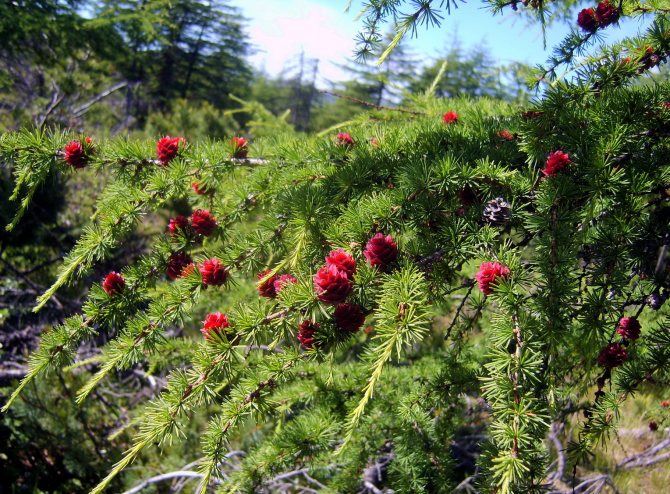

Photo of larch
Generally, you need to watch the tree. If the development of weeping larch is going well, you can not rush to feed. Notice that your appearance has deteriorated? It's time to support it with complex fertilizers.
Pruning, preparing for winter
For most species, winter does not pose a particular threat. The only exception is Japanese larch. If the snow has already melted, but the risk of frost persists, you can insulate the plant in the spring. For larch, pruning is optional. Nevertheless, it is still advised to carry it out in order to form a beautiful crown.
Varieties of larch
Depending on the location, the characteristics of the tree, several types of larch species are distinguished:
European larch
European larch
- she is common, is a wide representative of the breed in Western and Northern Europe. It reaches a height of up to 50 meters, has a slender strong trunk and a dense crown of irregular shape. In our climatic conditions, an adult middle tree reaches a height of 25 meters. The crown of a coniferous plant has the shape of a cone, the color is bright green. Mature cones have a brown tint, and their length reaches four cm, the tree begins to bloom in May. This tree is recognized as the fastest growing among its relatives. It is not afraid of cold weather, has a long service life and aesthetic qualities. It grows well on any soil, but does not tolerate places with stagnant waters. Larch lives well on calcareous, chernozems, podzolic soils and loams. In addition, a well-drained soil will provide an excellent foundation for the strengthening and development of both the root system and the entire plant.
Siberian larch
Siberian larch occupies 50 percent of the area in the forests of Russia and reaches 45 meters in height. A distinctive feature of this breed is a straight trunk, thickening towards the bottom. The plant is covered with a thick, light brown bark. The needles of young shoots have the shape of a narrow pyramid and are rare; in adult trees, they are wide, pyramidal, and raised high. The branches of the Siberian beauty are at an angle of 90 degrees in relation to the trunk, and their ends are bent upward. The leaves of Siberian larch are light green in color and narrow and range from 13 to 45 mm in length. When ripe, the cones acquire light brown and yellow shades. Pollination occurs in late April - early May and lasts for 1.5 weeks. The seed dispersion itself takes place in the fall, preferably in October. How long does larch live? Siberian larch lives on average 200-300 years, but there are trees more than 500 years old.
Siberian larch
Daurian larch
grows in the Far East and under good climatic conditions reaches 30 meters in height. The difference between this breed is red bark, which grows significantly thicker by the time the tree matures.Young shoots are straw-colored and can often be seen naked and drooping. The needles are light green, reaching 30 mm in length. The cones of such larch are small, only 20 mm long, have the shape of an egg or an oval. It is worth noting that the needles of the plant are light green in spring, bright green in summer, and golden in autumn. Flowering begins in late April - early May, and dispersion occurs in early autumn. The rock grows both on high mountain slopes and river valleys. Due to its undemanding soil conditions, Daurian larch grows in wetlands, rocky slopes and in areas with shallow permafrost.
American larch
distributed in the northern hemisphere and reaches only 25 m. in height. The trunk diameter is usually between 30 and 60 cm. It is mainly found in Canada and the northeastern United States. The conical crown is formed by serpentine branches that hang down. The trunk is dark brown or gray in color. The needles of the tree are light green in spring and darker in summer. The leaves reach 30 mm, and the cones are only 10-20 mm. They have a purple hue until completely dry and turn brown after opening. Flowering begins in mid-May, and productive fruiting occurs once every 4 years. It should be noted that the growth of this larch proceeds much slower than its sisters.
The varieties of larch do not end there, but unlike the ones listed above, most of them have decorative use due to their small size.
Taxonomy [edit | edit code]
The question of the number of larch species is to some extent controversial due to the ease of crossing in vivo and the production of hybrids, which, in turn, continue to hybridize. At the same time, the main morphological characters by which the species of larch are determined vary considerably, making it difficult to identify the species and hybrids of this genus. So, for example, in the Far East of Russia, the following main species and hybrid forms of larch are distinguished [ source not specified 3225 days
] :
- Larix gmelinii (Rupr.) Rupr. - Gmelin Larch = [syn. Larix dahurica Turcz. et Trautv. - Daurian larch]
- Larix gmelinii var. gmelinii =
- Larix amurensis Kolesn. - Amur larch
- Larix cajanderiMayr - Cajander Larch
- Larix kamtschatica (Rupr.) Carrière - Kamchatka larch
- Larix gmelinii var. japonica =
- Larix kurilensisMayr - Kuril larch
- Larix gmelinii var. olgensis =
- Larix olgensisA.Henry - Olginsky larch
- Larix koreanaNakai - Korean larch, nom. nud.
- Larix gmelinii var. principis-rupprechtii
- Larix komaroviiKolesn. - Komarov's larch
- Larix maritimaSukaczev - Seaside larch
- Larix middendorffiiKolesn. - Middendorf Larch
- Larix ochotensisKolesn. - Okhotsk larch
About fifteen species are generally recognized [11]:
Common pests of larch
As with all plants, there are pests on this breed that can harm the plants.
Larch hermes is a sucking insect that spawns larvae that feed on plant juices. This insect is very small, but adults are able to fly from one tree to another.
Larch hermes
Green spruce-larch hermes is the cause of bending, drying and shedding of needles. The most dangerous thing is that after the action of this insect, the affected branches dry out the next year. The effect of Hermes is due to the appearance of growths in which the larvae develop. The activity of this parasite causes a loss of decorativeness, as well as the death of young shoots.
The bud weevil is a beetle that feeds on larch buds. If we allow the widespread distribution of this parasite, then the fruiting of the tree can decrease several times.
The kidney gall midge lives and feeds on plant tissues, the affected shoots begin to suffer from infection and soon die off. Various fungi on the bark of a tree can cause the spread of putrefactive formations and pests.
The appearance of lichens on a plant leads to the formation of a wet area on the tree, where pests will willingly parasitize.
Comprehensive protection, adherence to planting rules and early pest prevention measures will help protect trees from parasites and diseases.
Diseases
Marsupial mushroom, popularly called larch cancer, is considered the most dangerous disease for larch. The disease affects the branches and wood of plants of different ages.
- matte or shiny spots;
- cracks in the bark;
- dying off of branches;
- falling off the needles.
The place where the fungus grows is in a waterlogged area. In sunny areas, this disease is practically absent.
Young seedlings are sick with fusarium, which will help to defeat the watering of the soil with diluted manganese... The cap moth can also eat needles. To get rid of this pest, it is advisable to use insecticides (chemicals) before the buds appear.
How to plant larch correctly, see the gardener's advice in the following video:
Differences between larch and pine
Differences between larch and pine
Many people often ask themselves how to distinguish larch from pine. In fact, it is not as difficult as it seems at first glance. The main difference between these two trees is the needles. Larch is the only plant that drops needles for the winter. Therefore, if a coniferous, bare tree appeared before your eyes, it is a larch. Pine only changes the color of the needles. You can also distinguish trees by the crown - larch has a conical frame, while pine is rounder. Pine leaves are tough and look more like spruce needles, while larch leaves are flattened and soft to the touch. Plant cones have different sizes, in pine they are larger and round in shape, in larch they are smaller and oval. The difference can also be found in color - ripe pine cones are deep brown, while larch cones are brown.
You can also distinguish trees in the form of finished sawn timber. Larch bark is much thicker and has a rich reddish hue inside. A sliver of larch will sink much faster than pine. The structure of the larch will clearly manifest itself under the influence of water. The marble pattern with a pinkish tint will stand out strongly against the background of the pine product. The smell of pine cannot be confused with anything, while larch will not express such an incense with needles. It is also easy to distinguish larch with the help of a log - the core and dense yearling rings will clearly stand out on the cut. All doubts will be dispelled by the arson of torches from both materials. Larch burns for a long time and very slowly, unlike pine. The strength of larch is much higher, therefore, after drawing a nail over the material, it is unlikely that deep marks will remain on it.
Pine and larch are different trees. Larch has significant advantages over pine despite their common coniferous species. The main characteristic of larch material is density. Compared to pine, it is 1.5 times higher. The indicator of this property for larch is 670 kg / m3, with a pine density of 440 kg / m3. Due to this, the tree has a higher hardness, which is 400 kg / cm2, the same indicator for pine - 200 kg / cm2. These two qualities already speak of the advantage of larch lumber. Building elements are more robust and can withstand significant loads. Rot resistance is another quality that is relied upon when choosing between two plants. So, pine has 3-4 degrees of stability, and larch 2-3. This shows how a tree can behave in an emergency. Pine has a low degree of resistance to rotting, while larch has a moderate degree, and therefore less susceptible to this risk. Fire resistance is an important indicator of wood fire resistance. Due to its resinous nature, pine does not have a high fire resistance, while larch is difficult to ignite, and when ignited, it burns very slowly.The moisture resistance of pine is undeniably inferior to its sister, for whom water is a way to increase their strength. The appearance of larch compared to its friend is noble and aristocratic. The surface of the material is characterized by a marble pattern with a pinkish tint.
Seed collection
Seeds in the Moscow region ripen by autumn, the cones open later. It is best to complete the collection of seeds before they begin to fall out of the buds. For breeding, we select only fresh cones with tightly pressed scales, under which the seeds are hidden. We don't need old bumps. But how do you know which buds on a branch are new and which are old and empty? First of all, they are easy to distinguish by their shape. In addition, the buds gradually darken.
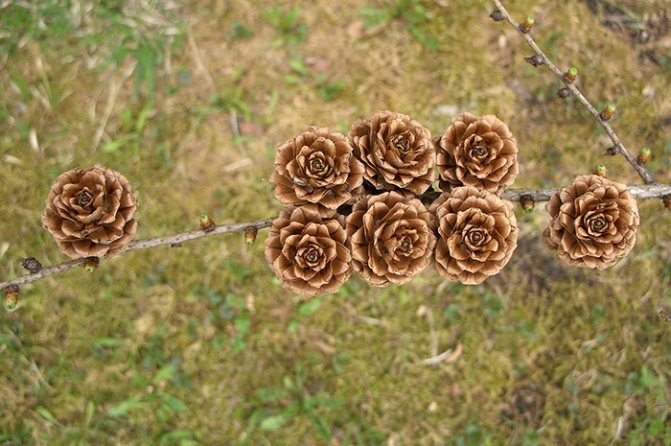

This is what last year's larch cones look like.
We put the collected cones in a cardboard box and leave for several days in a warm place. There the cones will dry out, their covering scales will spread out. It is easier to get seeds from cones with bent scales.
We wrap the collected seeds in paper, sign it and store it until sowing or stratification.
Larch benefits
Larch benefits
Due to its properties, larch is widely used in construction. The tree has the following decisive factors: The strength of larch wood is comparable to that of oak. According to the Brinell scale, the hardness of wood is 109 units, while in oak this indicator is 1 unit higher. Density contributes to strength - this is undoubtedly an advantage of the material, which reaches 660 kg / m3 at 10% humidity. This figure is 1.5 times higher than that of pine. The plant has high rates of compression along the fibers, modulus of elasticity, shock and static bending and shearing. Due to these characteristics, larch is used for the manufacture of parquet boards. Fire resistance is one of the important factors when choosing a material. Larch has good fire resistance, the indicator is several times higher than other tree species. Resistance to fungal diseases allows the tree to live quite a long time. Insects also appear on larch, which can harm the tree, but due to the plant's poor susceptibility to pests, they often change their preferences. Water resistance is always taken into account when building from larch timber. Due to this property, larch is used for outdoor structures. A distinctive characteristic - when absorbing water, the plant becomes even stronger. Therefore, this very rock was used in the construction of bridges earlier.
Environmental properties
Environmental safety is a guarantee of the quality of life, therefore any wood carries safety and a guarantee of health. The aesthetics of the breed allows you to create various materials that not only fulfill their direct responsibilities, but also decorate the room. The thermal conductivity of larch is much less than that of other wood, this is due to its density, therefore, mainly floors are made from larch.
Larch transportation
In order to deliver wood to its destination, alloy and other types of transportation are used. The peculiarity of larch is the acquisition of greater strength after being in water, so our ancestors tried not to raft deciduous forest on water. After all, gaining excess weight, the wood was sinking. Nowadays, this plant is rafted using cargo ships, which increases the efficiency and speed of timber delivery. For transportation, it is necessary to take into account the weight of the forest of natural moisture, which will be much larger than the dried wood. Recently, rivers have been loaded with traffic, so more and more timber is transported by rail and road.
For the safe transportation of raw timber to the place of its primary processing, special vehicles are used.These are dismantling semi-trailers, dismantling trolleys, pipe carriers. The density of coniferous trees of natural moisture plays an important role during transportation, since the weight of the moist forest is significantly greater. For the safety and security of all road users, safety attachments are used. For long-distance transportation, wood is pre-treated with antiseptic compounds to protect it from parasites and packed in a special film. Before transportation, the forest is prepared; for this, procedures for cutting branches are carried out.
Disembarkation rules
Siberian larch is classified as an unpretentious species.
The best time for planting is autumn, after the needles fall. It is not advisable to carry out the procedure in early spring, before bud break.
Selection of seedlings
Healthy seedlings with a closed root system are suitable for planting. It is better to purchase grown plants. Their price is slightly higher, but the chances that it will take root are greater.
It is first necessary to maintain the roots in a growth stimulant.
Site preparation
The ephedra is distinguished by increased cold resistance, light-requiring, but, in comparison with other representatives of its family, it does not tolerate waterlogged soil well and is demanding on air humidity indicators.
It grows well on podzolic and sod-podzolic lands. Accepts neighborhood with other trees, with the exception of birch and elm, which have the same developed root system that draws off food.
Landing technology
When planting several plants in one area, they are placed at a distance of 3-4 m from each other.
The planting method is classic:
- the root ball is placed in the center of the pit, leaving the neck at ground level;
- sprinkle it with soil from all sides, tamp it;
- the tree is watered abundantly.
Export of larch as a valuable species
Larch tree
Deciduous plantations occupy a large area in Russia, while in other countries this species is not enough. The need for high-quality larch lumber is especially great in countries with desert terrain and plantations unsuitable for construction purposes. The regular buyers of timber are Iran, Israel, Iraq, the CIS countries, the European Union and China. The latter country prefers larch, because it is she who serves as an excellent material for houses on the water. Lumber in the form of a bar, lining, block-house and floor boards are in demand. Abroad, larch is mainly used for decoration of premises and houses, for the production of furniture of excellent quality. The Austrians prefer Siberian larch as building materials for the construction of houses. It combines all the heat and sound insulation qualities, so the houses are solid. The exterior attracts foreigners and allows for delightful design complexes. The qualities and characteristics of this material make it possible to use it in shipbuilding, railway construction and many other areas. The possibilities of this tree are great, and with the help of modern technologies it is possible to achieve unique results in various fields of application.
How to use
Larch is most widely used as a finishing material for floors. Its cost is available to the average consumer. Differs in ease of installation. For convenience, the boards are equipped with special spikes, as well as grooves and cuts.
Terraced larch is no less popular. It has been widely used for covering open terraces, verandas, as a finishing material for areas of reservoirs and swimming pools, facing country paths and so on.
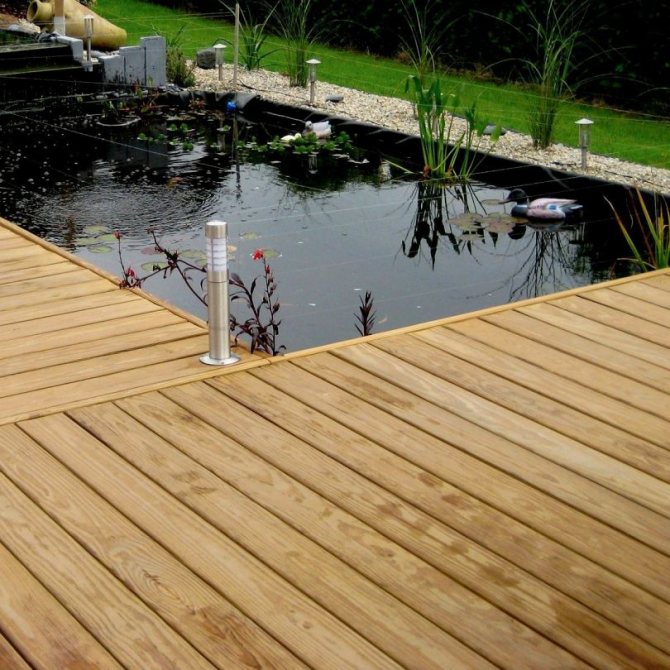

Solid flooring is perfect for laying parquet flooring.It is small in size, which makes it possible to create a variety of unique patterns.
The use of larch in construction. Larch lumber.
Larch lumber
Wood with high technical characteristics has found its application not only in construction. Resins with antibacterial properties have found their application in the manufacture of pharmaceutical preparations. Nevertheless, larch is more used to create various building materials. Having good hardness and durability, wood has found application in the manufacture of floorboards. Due to its moisture-resistant quality, the plant is used to make coatings for terraces and garden paths, used in the construction of baths, saunas and in any places with high humidity. Solid larch logs serve as a strong and durable skeleton for the construction of houses, and the use of solid woods makes it possible to produce finishing materials for indoor and outdoor use. It should be noted that wood is used for the manufacture of high-quality, durable furniture. What kind of larch is suitable for the construction industry? Larch wood is used to make lumber such as decking, beams, lining and other building elements. Such materials have high strength, resistance to external atmospheric influences, to decay and are practically not afraid of parasites and rodents. The uniqueness of this plant also dictates its cost, which corresponds to the quality and longevity of the structures. For additional protection of wood, various compounds are used that protect the elements from various factors and retain their aesthetic appearance for a long time. These are mainly oils that cover the material with a protective film and prevent contamination and abrasion of the element.
You can buy larch decking at affordable prices on our website.
Larch as rounded logs
The high cost of the rock and thermal conductivity are the reasons why whole log houses are rarely made. The strength of wood and its lifespan is an excellent solution for the construction of a durable structure, but the thermal conductivity index requires additional insulation of the walls or their thickening. Therefore, it is advisable to use rounded logs for the lower rims of the house. This will serve as an excellent support for subsequent crowns and will not allow the logs to sink too much. Also, the first crowns made of larch will protect the further tree from moisture, taking the whole "blow" upon itself, which will only make them stronger.
Rounded larch log is a durable material, despite the removal of the outer layer of wood. With this treatment, sapwood is removed - which for larch is about 2 cm, so costs are significantly reduced, and the tree remains strong along its entire length and diameter. Additional processing helps to protect the risk of parasites and other defects. The main task of processing is to preserve the appearance of the material, which is sufficiently resistant to any influences. With the right choice of covering, wood will sparkle with its natural beauty and create a cozy and noble atmosphere. A house built entirely of larch or with its use looks prestigious and original.
Larch block house
This finishing element is highly popular due to its qualities and design features. The material is an array of larch, well dried and processed. This preparation helps to avoid cracking and other deformations. The outer side has a convex surface and the inner side is flat. With the help of the tongue-and-groove connection, the boards fit tightly to each other, which creates a strong, integral structure.With the help of processing, a perfectly flat surface is achieved, and the grooves on the inner side of the element serve as ventilation ducts. Coating the finished element with varnishes emphasizes the aesthetic appearance, with the help of which, the structure looks beautiful. The appearance of such a material allows it to be used for interior and exterior decoration, regardless of the wall material. Usually they are sheathed with frame houses, but walls can be finished with brick, concrete, timber or panels. A block house is not only a beautiful finishing material, but also the protection of a building from adverse conditions, physical influences, humidity and frost. With its help, the thermal insulation performance of the walls increases, the degree of sound from the street decreases, the building acquires a full-fledged aesthetic appearance. Designers can use a block house to create a complex of original buildings.
You can buy a larch block house on the block house page.
Batten
Larch floor board
The use of larch boards began long before the advent of modern technology. Larch was used for shipbuilding, mainly for military purposes, so it did not immediately come into use at home. Bridges, piers and all structures adjacent to the water were made exclusively from this breed. The larch floor covering has a long service life, good wear resistance and moisture resistance. Natural ingredients allow you to maintain environmental safety and warmth in the house. This element is made from solid wood, which explains its longevity and quality. Parts of the required dimensions are cut, processed, thoroughly dried at a very high temperature. The edges on the outside are rounded to create a consistent picture and a good appearance.
Floorboards play a special role in the construction of open areas. Due to their good moisture resistance, the elements serve as material for covering terraces, garden areas and paths, gazebos. The specifics of the manufacture of floorboards are simple, specially made grooves on the outside of the coating act as a special feature. Serves as a constructive solution to drain water from the floor and prevent slipping. Particular attention is paid to the processing of boards in open areas. To avoid burnout in the sun, dust and dirt entering the pores, special protective work is performed with various compounds. The purpose of the process is to obtain a film that resists sunlight and dirt penetration. With its help, the material does not lose its aesthetics for many years and pleases the owner with its beauty and sophistication.
The floorboard can be bought on our website.
In the preparation of this article, Wikipedia material was partially used - Larch.

